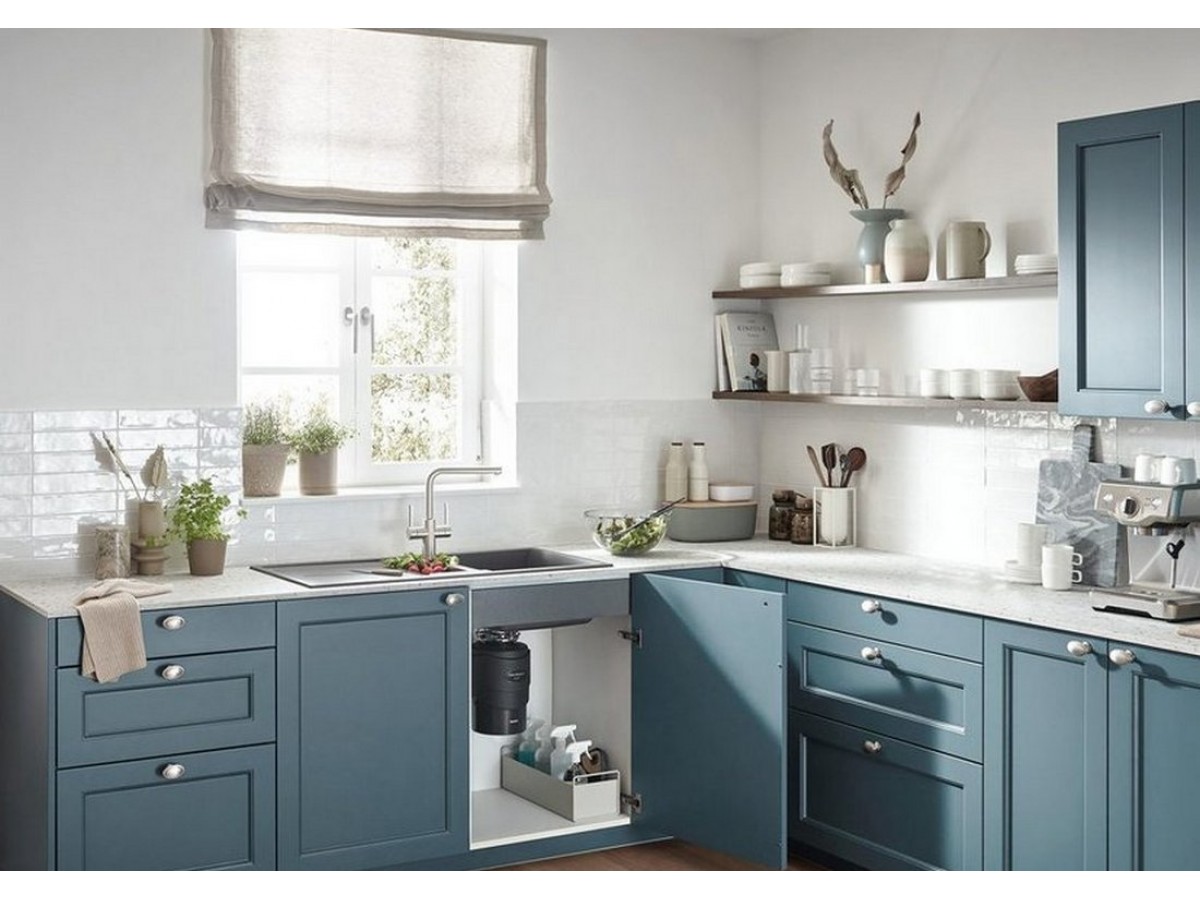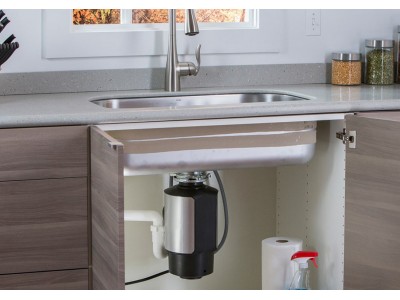We have collected the most popular questions from our customers, which arise both before the moment when they are going to buy a food waste disposer and during its operation.
How does a food waste disposer work?
Waste is fed into the food waste disposer along with tap water. Food waste is quickly crushed into small particles, after which it is washed into the sewer system. Disposers are designed to grind most food waste, including small cooked chicken bones, meat, fish, skins, eggshells, nuts and more.
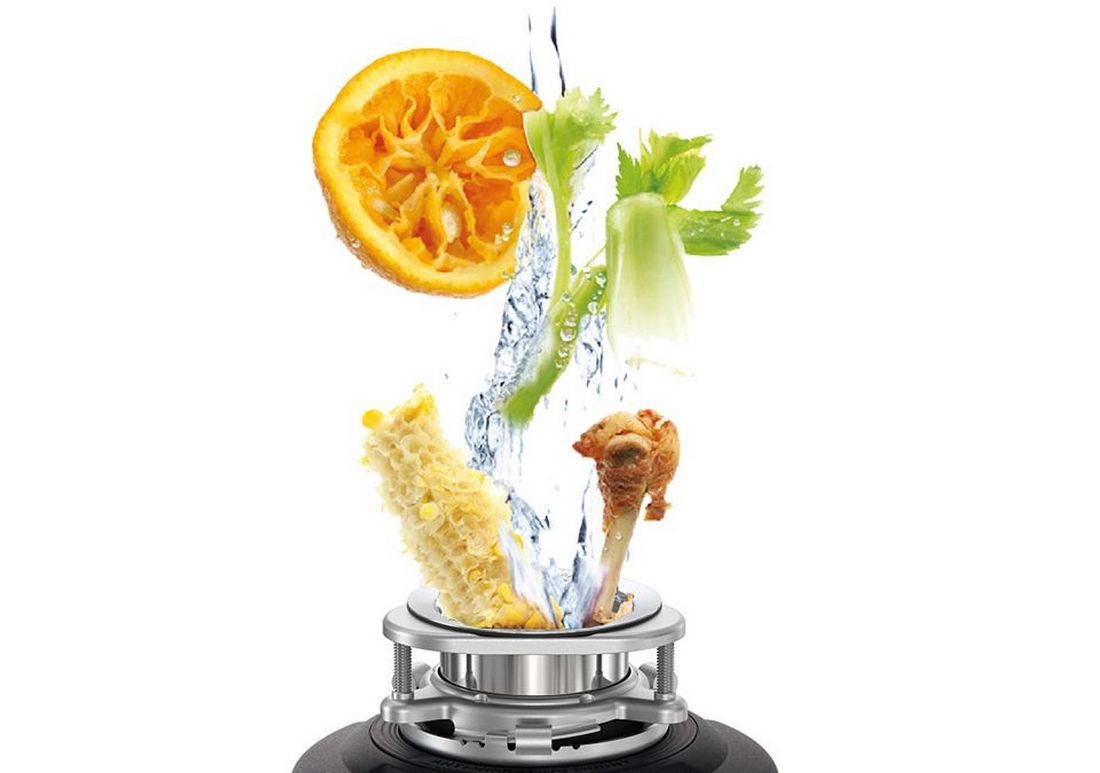
Is the food waste disposer safe?
Food waste disposers are manufactured in accordance with the standards in the field of operation of electrical equipment and household appliances. The first shredder was created back in 1927 and over this long period of time there are no known cases of injuries. Disposer can be safely called a safer household appliance in comparison with a microwave oven or a toaster. The grinder control button can be remote or pneumatic, which eliminates the user's contact with current-carrying parts.
Do I need a special sink to install a food waste disposer?
No. The food waste disposer is suitable for single, one and a half, double wash, stainless steel or other material. The standard 90mm sink hole is ideal for mounting it (the grinder comes with a nozzle for this size). Additional flanges are used for non-standard holes.
The main thing to pay attention to is whether you have enough space under the sink to install a grinder.
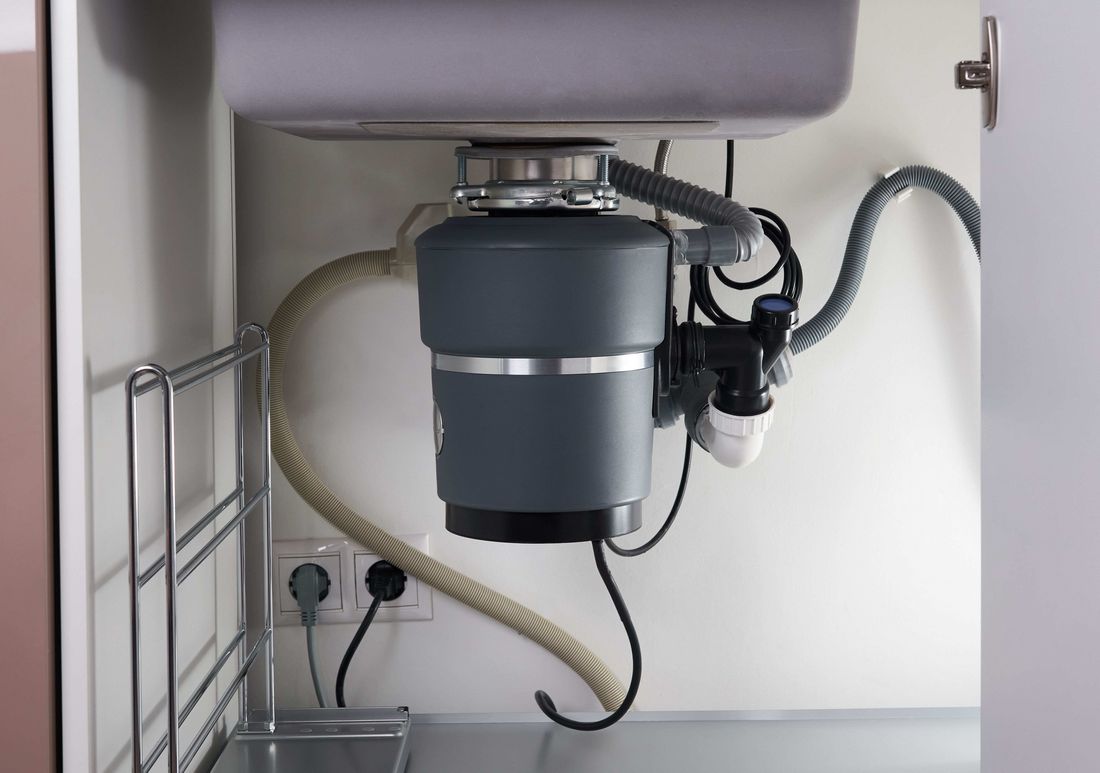
What can be crushed in a dispenser?
Most food waste can be placed in the grinder. These include peeling vegetables, fruits, herbs, nuts, seeds, chicken and fish bones, egg shells; peels of gourds, cherry pits and plum pits. In the disposer, you can also process non-food waste, such as disposable paper towels, napkins, cigarette butts.
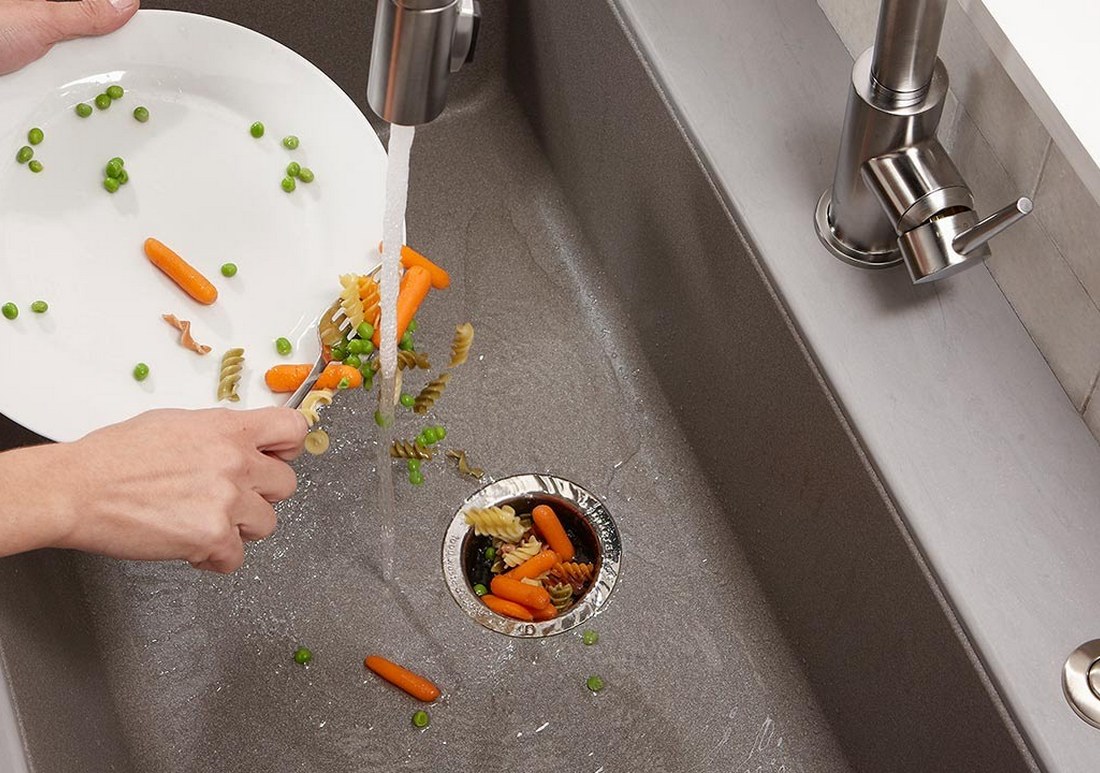
What should not be put in the food waste disposer?
Before shredding dry food waste (such as bread, parboiled rice, etc.), sticky food waste (such as dough, pancakes, etc.), and fiber-rich food waste (such as banana peels, leeks, and etc. it is recommended to add water to the waste container, thereby moistening the food waste.
It is also advisable to mix different types of waste. Provide a continuous supply of water to the grinder and ensure the required 1:20 slope for the sewer line away from the grinder to ensure efficient disposal of waste into the sewer line.
Choppers are efficient and come with built-in features specifically designed to clear clogs and clogs, however we still recommend watching what you put into the machine.
The following is a list of foods that should not be crushed in a disposer:
- artichokes or other fibrous foods
- pineapple top
- corn husk
- oysters and shells
- plastic or metal utensils
- glass
- plastic box
- disposable gloves
- aggressive chemicals
How long does it take to grind food waste?
Only a few seconds, although it depends on the amount and type of waste. The sound of the food waste disposer will change when there is no food waste left in the chamber and the impeller is free to rotate. After all food waste is crushed, you need to turn off the grinder and keep the water running for another 15 seconds.
How to use the food waste disposer?
Just 4 steps separate you from cleanliness and harmony in the kitchen:
- collect food waste in the sink while cooking and washing dishes.
- turn on the cold water and then the food waste disposer
- feed food waste into the grinder, after the chamber is empty, turn off the device
- do not turn off the water for 10-15 seconds
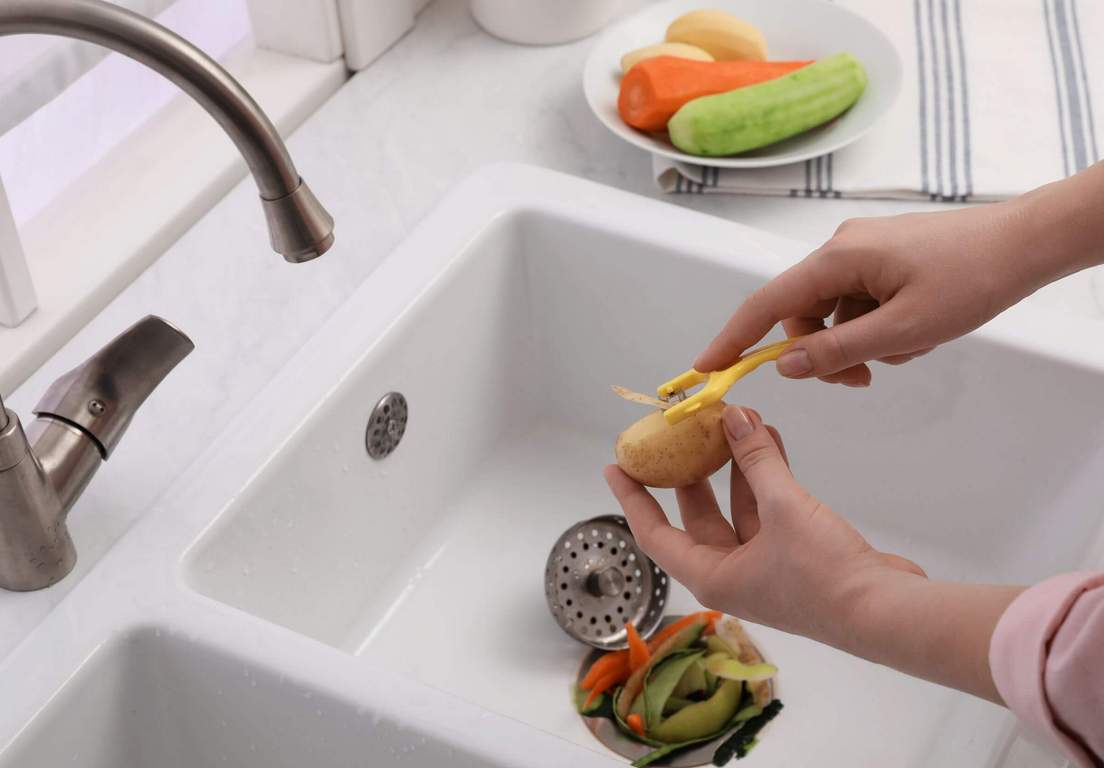
Should I empty the dispenser? Where does food waste go?
Disposers do not store food waste. When you load the waste into the grinder, you must turn on cold water, which will ensure that the waste is transported through the grinder into the sewer.
Do I need to service the dispenser during operation?
The food waste disposer is maintenance-free. The best way to keep your device up and running is to use it regularly. Keep it clean by rinsing it with cold water each time you use it.
You can use baking soda to clean your grinder more effectively, especially if there is some food waste left in the grinder. For extra freshness, you can grind the lemon for a few seconds without water.
Why is the food waste disposer making noise?
The cause of extraneous noise can be food waste stuck in the grinding mechanism, which comes into contact with the rotating parts of the device. To clean, try grinding ocher in a disposer.one batch of waste.
You can put a dozen ice cubes in the car, turn on the water, the unit and let it run for 5-10 seconds. This will help clear the hammers and grinding chamber of debris.
What happens if the dispenser jams?
This rarely happens, since the device is equipped with an automatic jamming protection system. If this did happen, most likely prohibited items, such as cutlery, got into the device.
Can I use the sink if the dispenser is not in use or is out of order?
Of course, the sink can be used as usual, regardless of whether the grinder is used or not.

